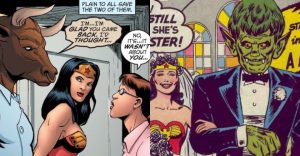Star Wars Better Explains A Key Part Of Boba Fett’s Mandalorian Armor

Warning: Contains SPOILERS for Star Wars: The Bad Batch episode 2, “Cut and Run.”
The story of Star Wars: The Bad Batch episode 2 revolves around chain codes, revisiting an idea from The Mandalorian and better explaining one aspect of Boba Fett’s armor. The Bad Batch‘s timeline may be nearly 30 years before The Mandalorian, but it still has some key connections. Episode 1 showed what appears to be an Imperial pre-cursor to Moff Gideon’s Dark Troopers, while trailers for the show revealed that Fennec Shand will appear at some point in the animated series as well.
Of course, even without those connections, there’s still a clear link, because any show centered on clones is, at least indirectly, dealing with the legacy of Jango Fett, the template for the Clone Army. The Bad Batch even has the first female clone of Jango – and perhaps the final clone of him, period – in Omega. But another way of drawing together The Bad Batch, Jango, Boba, and The Mandalorian comes in episode 2, as Clone Force 99 heads to Saleucami to contact an old comrade, the deserter clone Cut Lawquane.
When it quickly becomes apparent that Cut and his family cannot stay on Saleucami because of the increased Imperial presence, they attempt to leave – only to be thwarted by the need of chain codes, with credits no good. These are identification markers, containing all kinds of information about a person. While chain codes were first introduced to canon in The Mandalorian, The Bad Batch shows just how long they’ve been in use – and that fits with Boba Fett’s. His own chain code comes to prominence in The Mandalorian season 2, episode 6, “Chapter 14: The Tragedy,” when he dons his classic armor, revealing a chain code that contains information about himself and his father, and even mentions Jango’s mentor, Jaster Mereel. Boba mentioned in the episode that it had been encoded in his armor 25 years earlier, and The Bad Batch‘s use of the chain code better explains why.

The Bad Batch takes place in the immediate aftermath of Order 66, so is likely still in 19 BBY. Based on Boba Fett’s comments, his chain code is encoded in 16 BBY; since the gap is a relatively short three years, then it would seem as though the Empire keeps up its practice of requiring chain codes for some time. As Boba would have been moving around from planet to planet a lot at this point in the timeline while working as a bounty hunter, then it would fit that he’d need a chain code that would allow him passage. Since he was also keen on living up to his father’s legacy, it’s also possible Boba had the chain code put in to prove who the suit really belonged to, and to ensure that Jango’s memory lived on within it in some way.
Interestingly, the chain codes in The Bad Batch also draw a parallel between the Empire and the New Republic. Like the Empire, the New Republic – while ostensibly the good guys – used chain codes to identify fugitives. That’s not quite the same as the widespread use by the Empire seen here, but it shows that not all Imperial practices died out when Palpatine was “killed” and his regime was overthrown. Indeed, there’s plenty to suggest that the New Republic wasn’t entirely equipped to handle its governing responsibilities – The Mandalorian itself doesn’t cast the most favorable light on it – and the link made in Star Wars: The Bad Batch doesn’t help things in that regard.
- Rogue Squadron (2023)Release date: Dec 22, 2023
About The Author


















